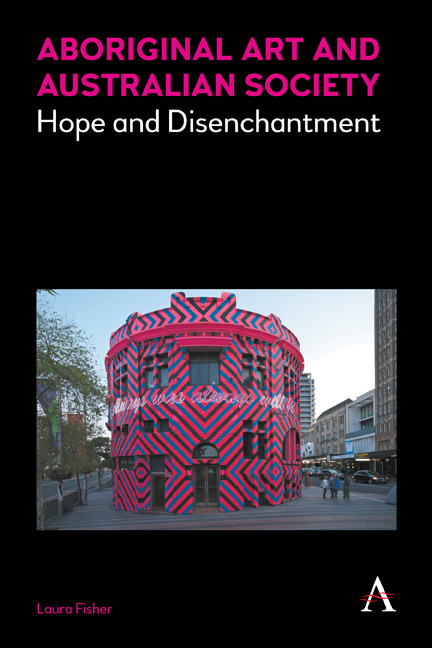Book contents
- Frontmatter
- Dedication
- Contents
- Preface and Acknowledgements
- Introduction
- Part I Governance, Nationhood and Civil Society
- Part II Contemporary Aboriginal Art in the 1980s
- Part III Negotiating Difference
- Part IV Aboriginal Art, Money and the Market
- Chapter 9 Ethics and Exploitation in the Aboriginal Art Market
- Chapter 10 ‘Aboriginal Mass Culture’ and the Cultural Industries
- Conclusion
- Notes
- References
- Index
Chapter 9 - Ethics and Exploitation in the Aboriginal Art Market
from Part IV - Aboriginal Art, Money and the Market
Published online by Cambridge University Press: 22 July 2017
- Frontmatter
- Dedication
- Contents
- Preface and Acknowledgements
- Introduction
- Part I Governance, Nationhood and Civil Society
- Part II Contemporary Aboriginal Art in the 1980s
- Part III Negotiating Difference
- Part IV Aboriginal Art, Money and the Market
- Chapter 9 Ethics and Exploitation in the Aboriginal Art Market
- Chapter 10 ‘Aboriginal Mass Culture’ and the Cultural Industries
- Conclusion
- Notes
- References
- Index
Summary
In 2006 the government announced that a Senate Inquiry into the Indigenous Visual Arts and Crafts sector would take place to establish a better understanding of the sector's scope, the creative and market practices that took place within it, and ultimately to assess its sustainability and recommend strategies for its growth. The committee received hundreds of submissions, visited several art centres and art galleries and staged a series of hearings in different cities before reporting in mid-2007. The first paragraph of the report's introduction offers an exemplary articulation of the celebratory narrative of the Aboriginal art phenomenon:
Australian Indigenous art is a story of the flowering of one of the world's greatest contemporary movements in art. It is a story of cultural reinvigoration and communication within, between and beyond Indigenous communities. It is a story of successful links being forged across areas of Indigenous policy and need, particularly between culture and health. And it is a story of economic growth and prosperity amidst poverty and economic disadvantage. (The Senate Standing Committee on Environment, Communications, Information Technology and the Arts 2007, 1)
While the Inquiry was tasked with addressing a range of matters, the issue of ‘unscrupulous or unethical conduct’ was of greatest interest to those engaged with the sector. The majority of those who made submissions and participated in the public hearings were representatives of fine arts dealerships, art centres and arts institutions. Most of these advocated for the art centre system and condemned the conduct of a cluster of dealers, wholesalers, agents and intermediaries who were engaged with the production and sale of art outside this system. Put simply, the agendas and methods of the latter were presented as antithetical to the ethical conduct exemplified by the relationships between art centres and fine arts dealers.
One of the triggers for the inquiry was Nicholas Rothwell's 2006 broad-sheet feature article ‘Scams in the Desert’ in which he speaks of the ‘rotten, morally decayed state of the indigenous art trade’ (2006a). He declared that the art trade had ‘become a gold-rush scene where money chases the dream of profit, where forgers, con men and thieves with plausible eyes greet you at the entrance of smart shopfronts, while Aboriginal artists sit cross-legged in back-yard sheds, daubing hack works for paltry sums’ (22).
- Type
- Chapter
- Information
- Aboriginal Art and Australian SocietyHope and Disenchantment, pp. 139 - 154Publisher: Anthem PressPrint publication year: 2016



